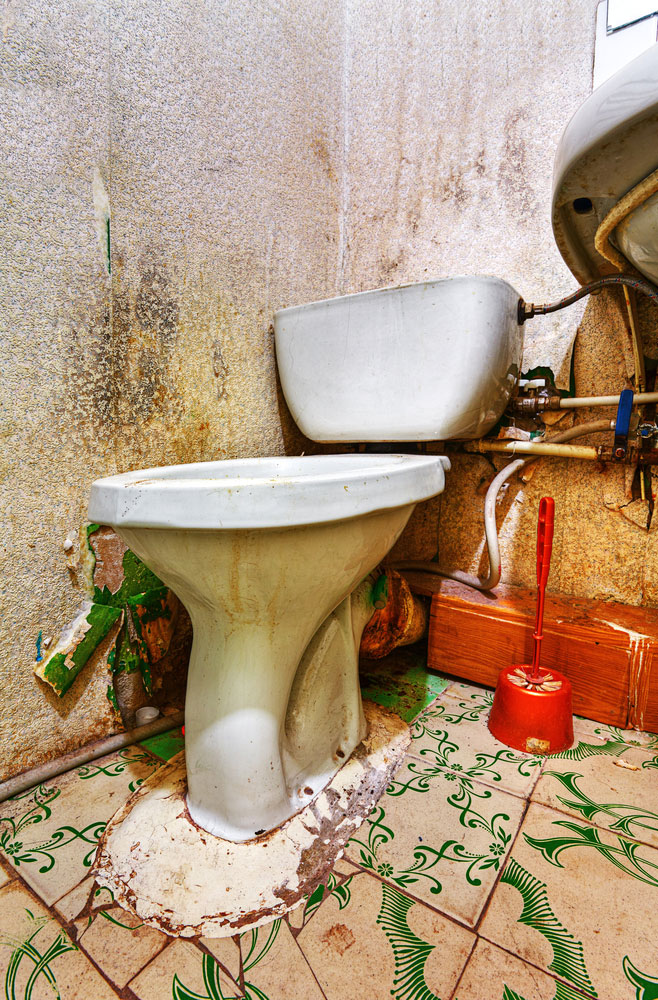Have you been interested in advise concerning Preventing Water Damage in the Bathroom?

The bathroom is exceptionally prone for moist buildup as well as prospective water damage as a result of the regular use of water in it. This post provides straightforward assessment techniques to aid discovering water damage dangers.
The frequent use water in the restroom makes it extremely susceptible for wet build-up and also prospective water damages. By checking it regularly, you can minimize water related problems.
The following set of examinations is simple to execute as well as need to be done as soon as in every three months in order to maintain your bathroom in good shape and also to avoid possible water damages triggered by the bathtub, the shower, pipe joints and also plumbing, sinks, cabinets, as well as the toilet
Do not neglect carrying out these examinations and be complete while executing them. Keep in mind that these easy assessments can save you a lot of cash by giving early indicators for water damages
Bathtub as well as Shower
The shower and also bathtub require unique focus and maintenance. Inspect the floor tiles and replace if split. See to it that there is no missing grout between the floor tiles. Evaluate and change cracked caulking at joints where the walls satisfy the flooring or the bath tub. Obstructed drains and pipes issues will certainly prevent the bathtub from drying as well as might suggest major issues underneath the tub. Talk to an expert promptly to stop architectural damages. Focus on stainings or soft locations around the tub wall surfaces as they might suggest an interior leak.
Plumbing
Signs for water damage are hard to spot because most pipes are installed inside the wall surfaces.
Pay unique focus to floor covering as well as walls wetness and stains as they may show an unseen plumbing trouble. Inspect moisture levels in adjacent areas also.
Sinks as well as Cabinets
Sinks and also closets are revealed to dampness and also moisture everyday as well as are typically ignored. Examine frequently under the sink as well as on the counter top above it. Repair any drip in the catch as it might recommend drain issues. Take a look around the sink, slow draining pipes might show an obstructed drain. Replace sink seals if they are cracked or loose.
The Commode
The commode is a prone water junction. Check the water lines and also look for leakages around the bathroom seat, in the hose, and also under the water container. If you find any type of signs of moisture on the flooring around the bathroom, check for leaks in the toilet edge as well as tank seals.
Be aware that hanging commode dish deodorants raises the opportunities for blockages.
Water Damage Signs In The Bathroom To Avoid Cleanup
Musty smell
This is one of the easiest signs to catch because musty smells are so odorous. The damp, earthy, moldy smell should be a big red flag. The smell will develop when moisture gets trapped in surfaces, and begins to facilitate mold growth. Leaking pipes under cabinets, inside walls, and behind shower fixtures will cause moisture to stay trapped and not dry, which will lead to mold growth and spread. As soon as you notice any musty smells in your bathroom, have it checked for hidden water damage and cleanup signs.
Visible mold
If the smell isn’t there to give it away, sometimes you will actually see mold growth. Finding mold in your bathroom is a serious problem, because mold is very harmful to your health. By the time mold growth is visible, it also means that water damage has already occurred and been present for some time. The only way the mold problem can be resolved is to find the source of the moisture and get it stopped. To safely and adequately remove mold, you need to have professionals handle the remediation. Do not waste any time in getting mold problems addressed, fixed, and sanitized so that you can protect you and your family from the many respiratory symptoms caused by mold exposure.
Damaged floors
Bathroom floors should be able to withstand some exposure to water while still remaining in good condition. However, when excess exposure or water leaks occur, they will begin to damage even the most water-resistant flooring. If you notice any cracking, bubbling, staining, or warping on your bathroom floors, there is probably a water leak somewhere causing the distortion. If you notice areas of the floor have become softer, or even have a spongy feeling, there is probably damage to the subfloor. Subflooring is typically made up of plywood. When plywood is exposed to water or moisture, it will absorb it. Once it has become saturated, the weight of the excess water will cause the wood to swell and soften. Check the floors in your bathroom frequently to catch any of these sings before they lead to damaged subflooring.
Changes on walls
When water leaks behind walls, it will cause changes in the drywall. Peeling plaster, blistering paint, and soggy wallpaper are all good indicators that excess water is building up behind the wall. Water leaking behind drywall will cause it to swell and be soft to the tough. If you start to notice gaps along the trim of your walls, or where tile meets the wall, it could also be a strong indicator that there is a leak behind the wall. Any changes, distortion, or damage on the walls should be evaluated as soon as you notice it to prevent further water damage and cleanup.

We hope you liked our section on How to Fix a Water Damage Bathroom. Thanks a ton for taking time to browse our posting. Sharing is nice. Helping others is fun. We love reading our article about Common Causes of Water Damage in a Bathroom.
Book Appointment